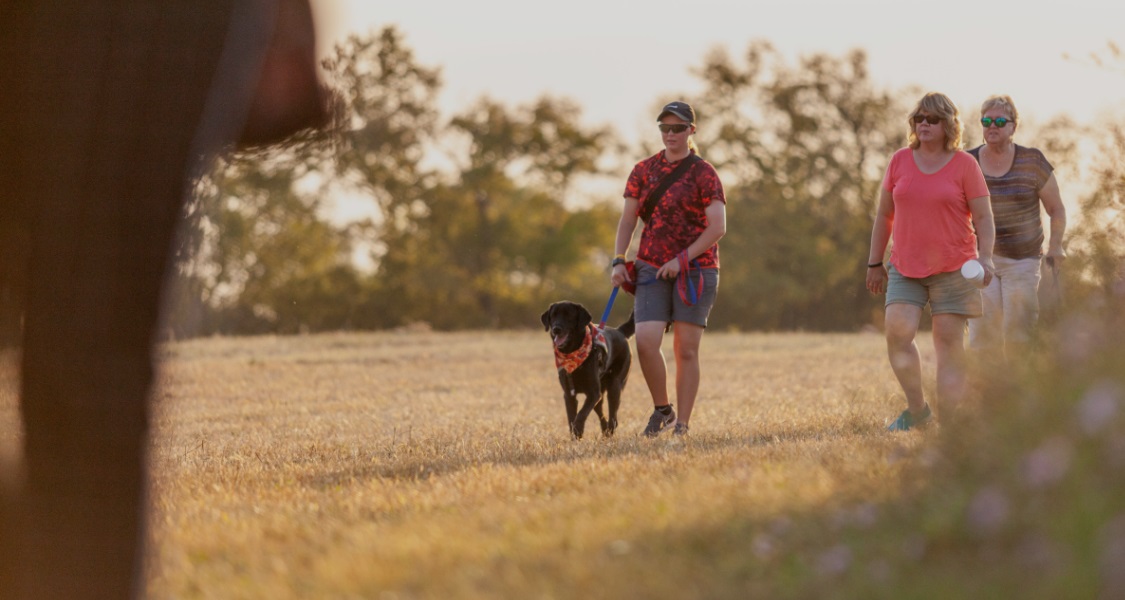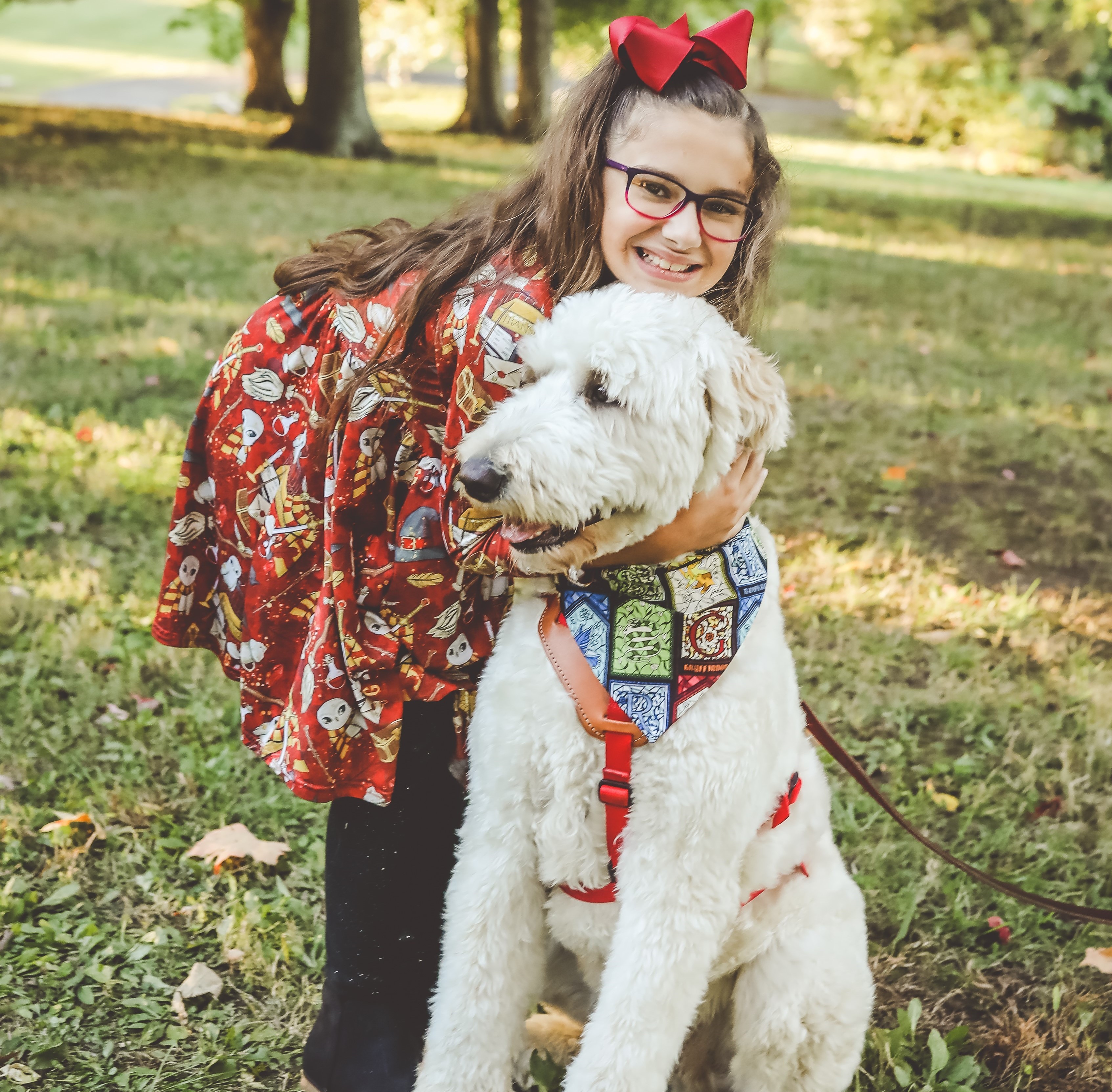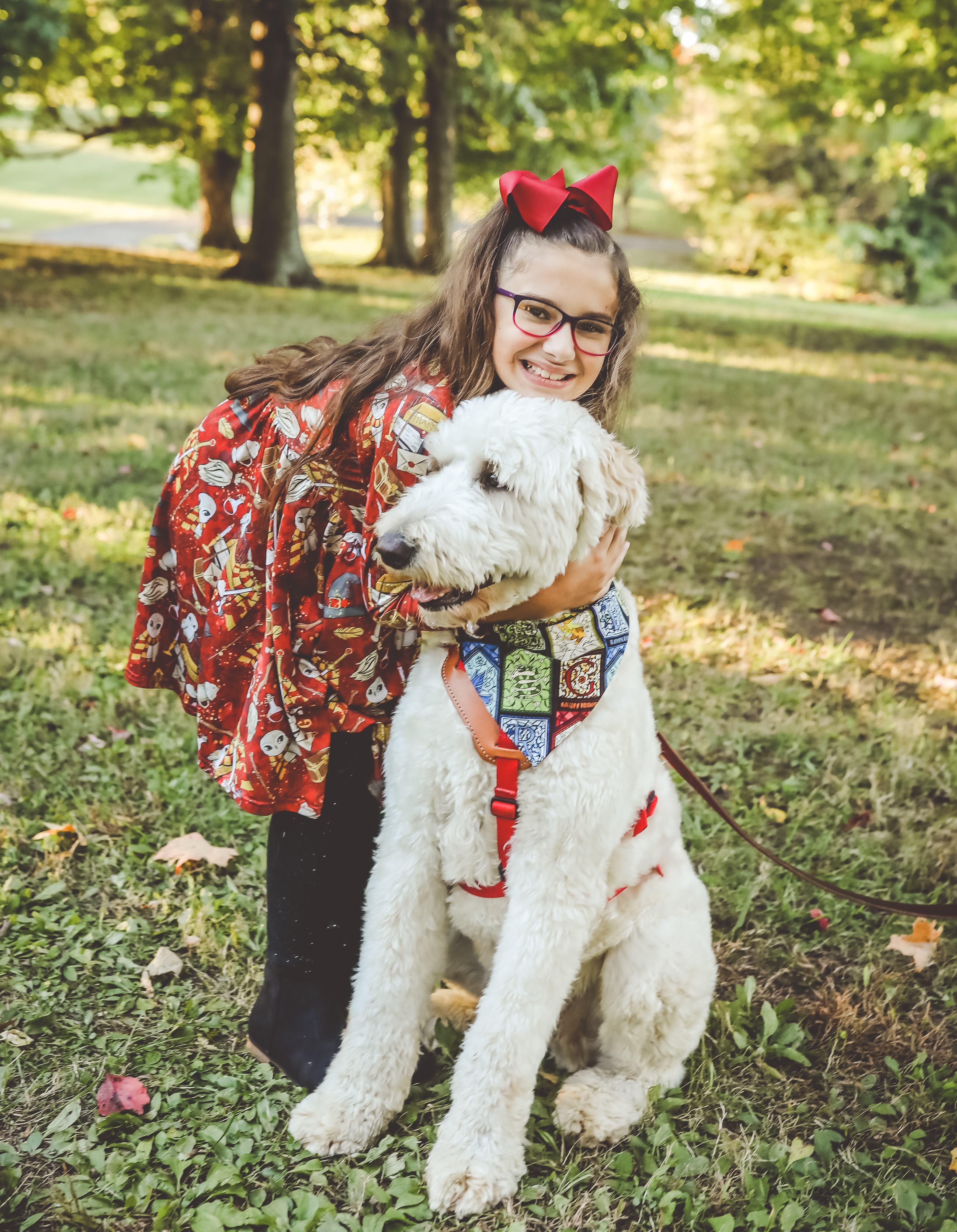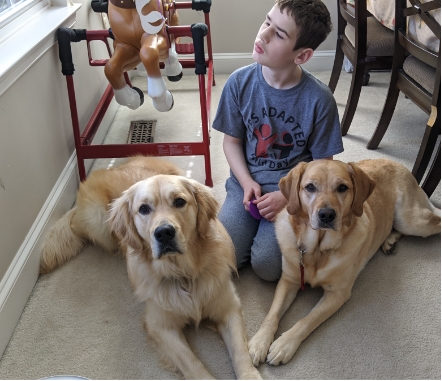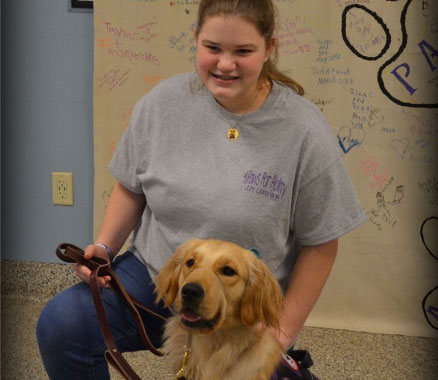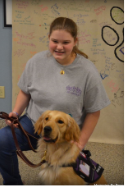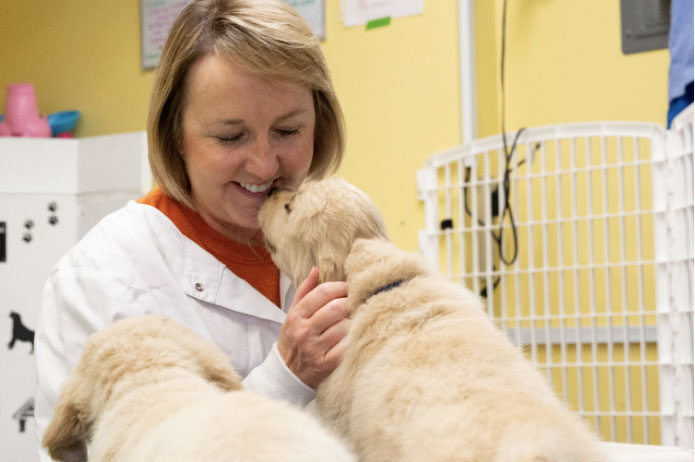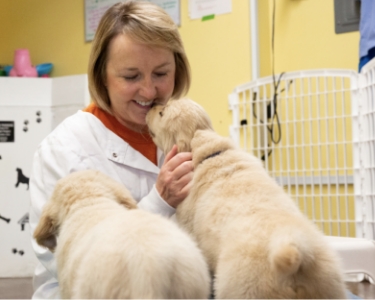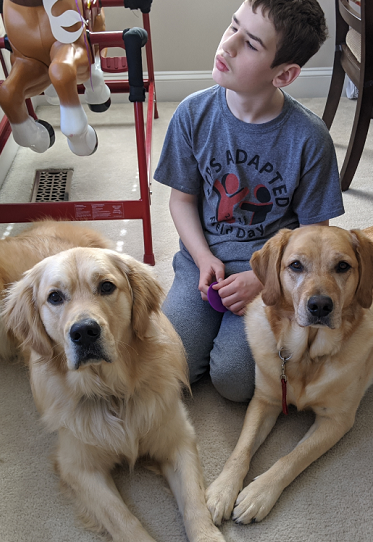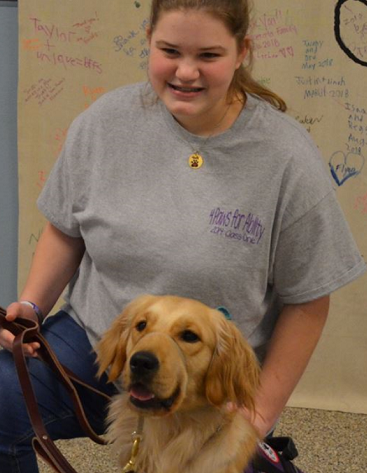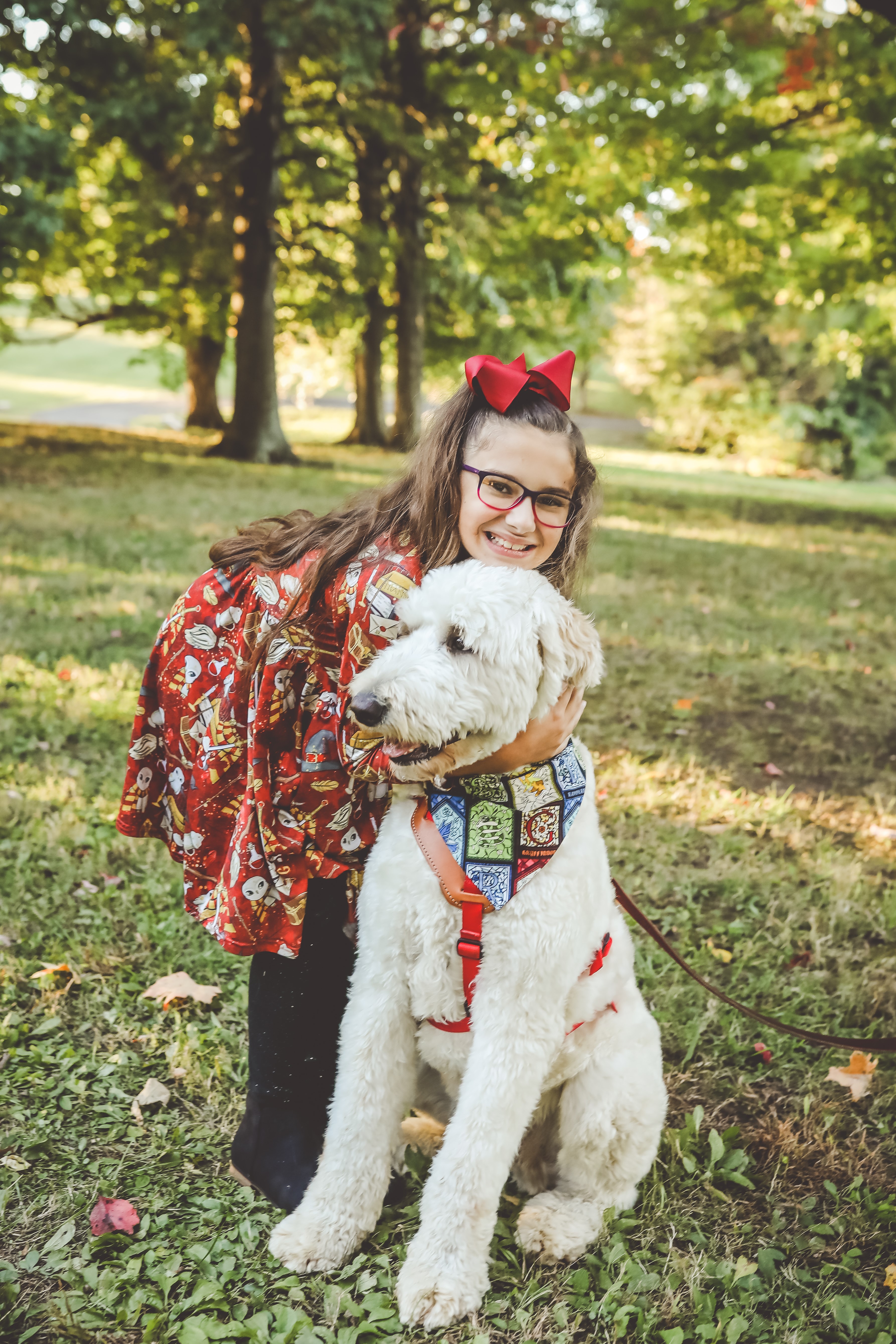
My name is Larena Runnels and I live in Elizabethtown, KY with my husband and our three beautiful children. My middle child, Layla, has autism, chronic migraines, and a history of seizures.
Layla was diagnosed with autism at age two, and at age three, she began having seizures. Handling seizures is already complicated; however, Layla’s autism made this even more challenging. Layla struggles to verbalize and communicate and her seizures are typically silent, characterized by tenseness and mild shaking. If you’re not looking at her, you wouldn’t know she’s having one. That is especially terrifying as a parent – I felt like I needed to be there, with my eyes on her all the time, to keep her safe. Otherwise, she could have a dangerous seizure and I’d never know. Nighttime was especially scary – I could never sleep well for fear that she’d have a seizure in her sleep.
We reached out to 4 Paws for Ability in search of a seizure assistance dog. Thanks to our incredible community’s fundraising efforts along with the generous support of Eisai through their Magnolia Paws for Compassion program, we were able to bring Harry Hay (known as Harry), our seizure assistance dog, home in September 2021.
Thanks to 4 Paws for Ability, our family is now not only complete, but more at peace with our situation. We are all more confident and secure (and able to sleep at night!), knowing that Harry will alert if Layla has a seizure. Harry can also detect if Layla has a migraine, something she has difficulty communicating to us, allowing our family to better treat and support her.
In addition to seizure support, one of Harry’s greatest abilities is that he provides behavioral disruption and redirection related to Layla’s autism. He nuzzles Layla and applies deep tissue pressure to her legs with his body. Further, if Layla wanders or gets lost (often typical of autistic children), Harry is an amazing tracker – he can track and find her outside of the home or inside of a store.
4 Paws for Ability has provided us with one of our life's greatest gifts while simultaneously supporting us and offering us resources and people to reach out to. Those of us with service dogs from 4 Paws for Ability call the special bond between a child and their service animal the “4 Paws Magic” – and seeing the bond between Layla and Harry is proof that the 4 Paws Magic is real and stronger than I ever thought it could be.


